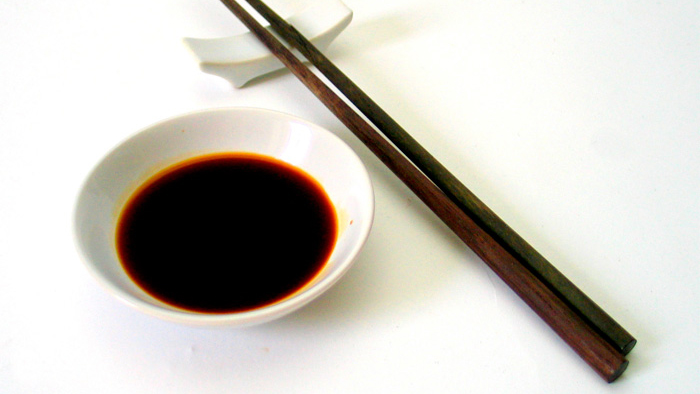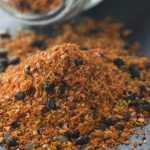Welcome one more week to our #OrientalMarket Blog!
If we think of condiments in Japanese cuisine, wasabi, soy sauce, or other similar ones will surely come to mind. However, there is one that we hardly ever hear about, but which is actually key in many of our favourite recipes. Do you know it? This week we talk about it.
What is mirin?
If there is one thing that stands out at first glance, it is its colour. It has a golden colour, a liquid consistency and a syrupy texture (this is why some people call it a “sauce”). On the palate, mirin has a sweet taste. And what is it generally used for? Well, it is actually an essential ingredient in many traditional sauces, such as teriyaki sauce. Technically, mirin is a type of rice wine, or sake, but with a very low alcohol content. It is made using 3 main ingredients: rice, koji (a mushroom that is very common in Japanese cuisine) and finally shochu (a popular Japanese drink that we have referred to on several occasions).
Did you know that there are three different types of mirin for cooking?
1. Hon-mirin, or real mirin
The preparation of this mirin requires a combination of the following ingredients: glutinous rice, koji rice, shochu and alcohol (14%). This version is notable for its low salt content (0%) and for its intense, sweet taste. It is also known as “pure” mirin. It is widely used in the preparation of sauces and stews, and one of its peculiarities is that it minimises the smell of fish in food. For many, this is the real mirin.
2. Mirin seasoning: Mirin-fu Chomiryo
If in Hon-mirin we referred to the high alcohol content, in the case of Mirin-fu it is completely the other way around. In this case, the alcohol content is less than 1%. It has a pinch more salt, however, it is still a very low value (also less than 1%). As is characteristic of mirin, the sweetness is maintained, largely thanks to the composition of its ingredients: sugar (composed of maltose and glucose), rice, koji and acidulates.
3. Fermented mirin seasoning: Fermented Seasoning
Finally, this third type of mirin uses the same ingredients as mirin-fu. However, if there is one thing that sets this mirin apart from the others, it is the degree of saltiness. Specifically, the percentage of salt in this mirin is around 2%.
Buy mirin online or in shops
You can buy mirin in some of our shops in Barcelona and Madrid or in our online shop.
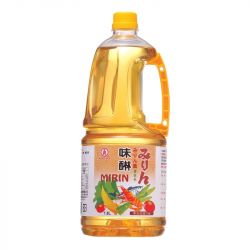
Vinagre dulce Mirin (KONG YEN) 1.8L
17,95 €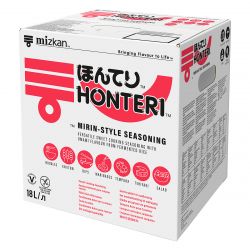
Vinagre dulce Mirin (HONTERI). 18 L
125,29 €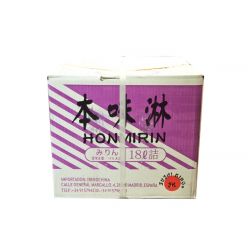
Vinagre dulce Mirin (SK) 18L
71,20 €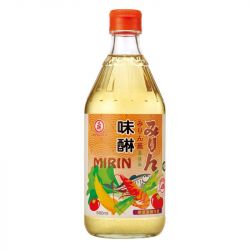
Vinagre dulce Mirin (KONG YEN) 500ml
6,49 €
Origin of mirin
Like many ingredients, mirin has also evolved since its origin. Centuries ago, in ancient Japan, mirin was consumed as a beverage, as it is a rice wine with very similar points to sake, and even the traditional little cups that we always see today when serving sake were used! Later, however, some daring people realised that this drink could be a key condiment for flavouring dishes. Is it not the same with white wine?
Mirin is available in ethnic supermarkets and speciality shops all over the world, and can be found in an infinite variety of brands (as well as cost and quality). It usually comes in a bottle and is often associated with the sauces category.
Ingredients and nutritional information
This type of rice wine is created by naturally ageing a type of rice (glutinous rice), adding rice malt (koji), shochu and finally a touch of alcohol. The sweet taste is due to the malt converting the starch into sugar. It has a lower ABV than fake (around 10%) and a high sugar content.
A very common ingredient for seasoning soups or sauces, and also to sweeten some dishes. Its main benefits include:
- Helps to suppress the raw meat odour of fish and meat.
- Natural sweetener to your dish.
- Thickens the sauce and adds a wonderful glaze.
- Prevents boiled ingredients (such as potato or fish) from collapsing more easily.
What do you think? Feel free to show us the results of your recipes on our social media @Oriental_Market.



